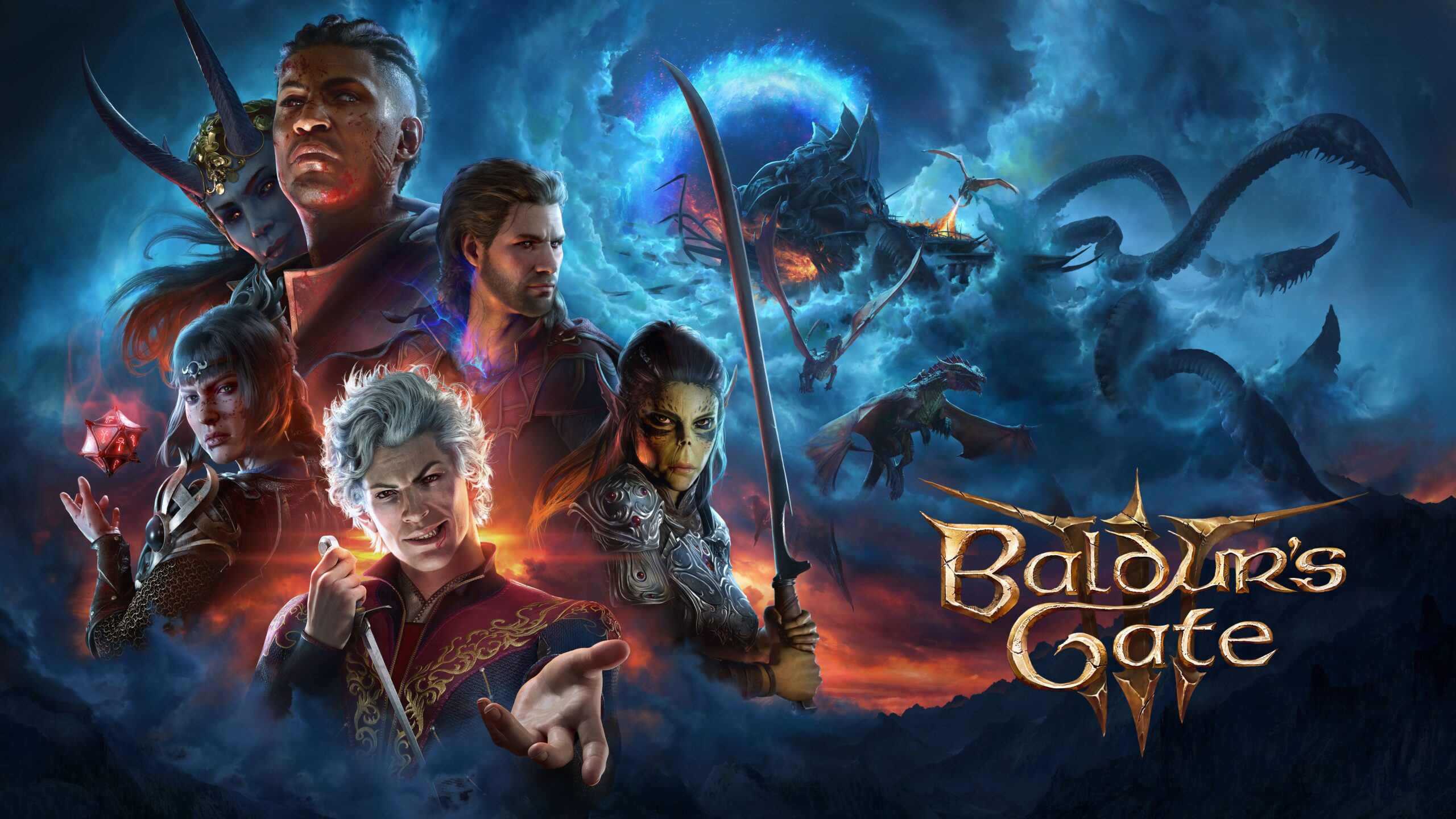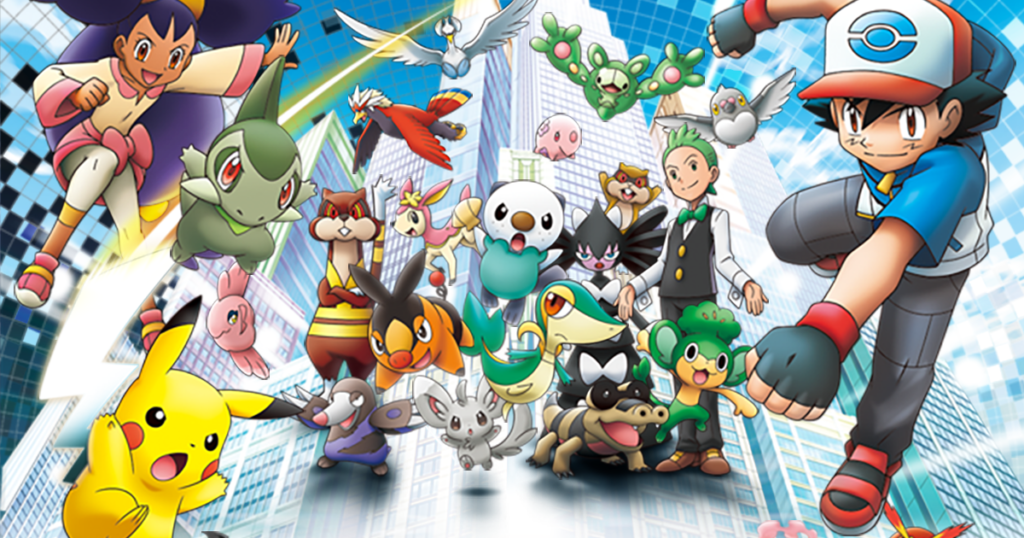
Image Source: Nintendo
Pokémon Black and White, Truth vs Ideals, and the Future of a Franchise: A Saturn Return Story
(This essay includes spoilers for the entire plot including the ending of Pokémon Black and White.)
Astrologers look at the charts of things other than humans – your business has a birth chart from the moment its doors first open the public, your marriage has a birth chart from the moment the clergy says “I now pronounce you,” and a major game franchise has a birth chart of the moment the first game in the series is released. Astrology is more art than science, but in my experience it is first and foremost a humanity. Like history or literary criticism, it is a lens of analysis, a way of understanding things, a form of advanced pattern recognition. It treats time like a climate with “weather” that can be predicted. If you know it will rain, you will bring an umbrella. If I know Mars is gonna muck up the Moon, I‘ll make sure to bite my tongue when I want to argue with my boss. Either way I’m prepared for that day’s afternoon when I leave for work. The planets are the players, the signs the territory of sky the planets move through – each sign 1/12th of the sky.
Pokémon was born on February 27, 1996 with the release of Pocket Monsters Red and Green in Japan for the original Game Boy. Pokémon is a Pisces with the Moon in Gemini, Venus in Aries, and Saturn and Mars also in Pisces.
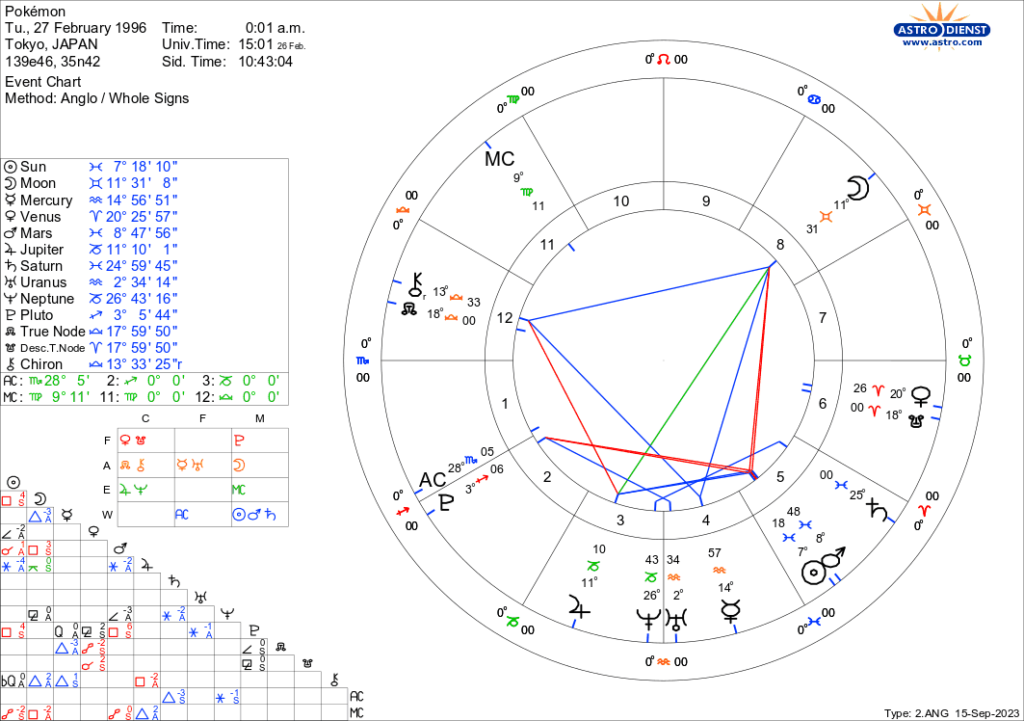
One of the most famous cycles of time astrology describes is the Saturn return. Around age 27-30 or so depending on what you count and how, Saturn returns to the part of the sky it was in when you were born. I follow the thinking that the Saturn return is when he’s in the same sign he was in when you were born, a period of time that lasts about two and a half years roughly speaking. Pokémon came into being when Saturn was in Pisces, and Saturn is in Pisces again now – from March 7th 2023 to May 24 2025, and then a brief dip back in for a few months from September 1 2025 to February 13 2026.
Saturn is the planet that deals with things like maturity, age, wisdom, experience, limitation, restriction, the elderly, death, consequence, responsibility, letting go, holding back, slowing down, long-term thinking and planning, goal-oriented ambitions, stubbornness, rigidity, careful consideration before action, the borderlines and those outside them, walls, foundations, structures of all kinds – I think you get the idea. Pisces is fluid, flowing, relaxed, dissolute, evasive, generous, spiritual, in tune with the non-physical, imaginative, dreamy, contemplative, intuitive, changeable, hard to pin down. It is a sign which has much to do with dreams and visions, and Saturn has much to do with the cold hard facts of reality which can be stumbling blocks and obstacles or the brick and mortar to build a future with.
The Saturn return is a time when we are presented with a challenge of what it means for us to grow and mature. It is a time when we are forced to ask ourselves tough questions about who we truly are as a maturing individual, as the first gray hairs come in and things which once worked just fine now… don’t, quite. Some people do better with this than others – Saturn will throw obstacles in your path, and not everyone navigates those obstacles successfully.
The nature of the obstacles always has to do with the sign Saturn returns to. Saturn is limitations and the unavoidable facts of reality. Pisces is dreams, visions, and ideals. The obstacle Saturn in Pisces throws at us is the conflict between our reality and our hopes and goals. I think of it as the conflict between reach vs. grasp, as in “his reach exceeded his grasp.”
Pokémon as a franchise is at a turning point with regards to this very conflict. Its reach is at odds with its grasp, and moving forward is only possible if a middle ground is achieved. This is the exact maturation challenge a Saturn Return in Pisces entails. And as part of that process, it is time for the franchise to return to its games that dealt with this very conflict: Pokémon Black and White.
—
Ruby and Sapphire had sea vs land, Diamond and Pearl had time vs. space, and Black and White have truth vs. ideals. Truth vs. ideals is the organizing conflict at the heart of B&W’s storylines as represented by the legendaries on the box art. The meaning of “truth vs. ideals” isn’t well-defined within the games themselves, but it is basically the conflict of Saturn in Pisces – reach vs. grasp, limitations vs dreams, etc. It is a conflict at the heart of B&W’s story arcs – Cheren dreams only of becoming stronger, and never thinks about what comes after. He is challenged on this by the Unova Champion Alder, who achieved that dream and now lives unfulfilled by it, wandering in search of purpose. Bianca pushes back hard against her parents to become a Pokémon trainer but falls behind her peers, spending less and less time as a trainer as the story goes on, choosing to focus on research instead. It isn’t enough to have a dream – it has to be a dream grounded in reality. The reality of what happens if you can’t achieve it, and the reality of what happens if you do. All forms of the Saturn in Pisces maturation conflict.
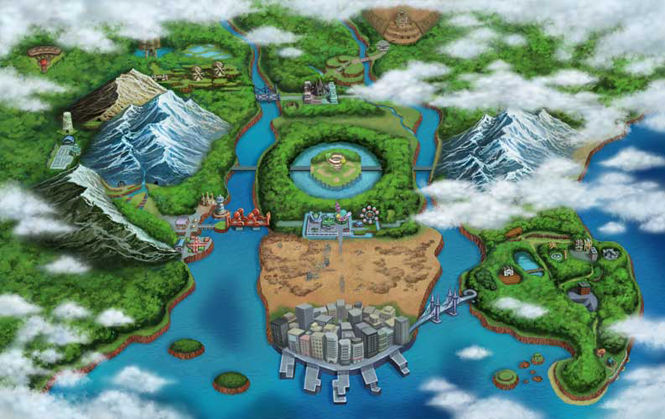
I am drawing on Skyehoppers’s wonderful video essay here, “Pokémon Black & White asks the Impossible.” It’s an essay that connected to some thoughts I’ve had about those games and the series as a whole for a long time, and there is a connection to be made to the way the games’ production seems to echo the same tension as its storyline. It reminds me of one of my favorite pieces of journalistic writing, “Red Dead Redemption 2: The Kotaku Review,” specifically this part towards the end:
“Intentional or not, Red Dead Redemption 2 can be read as a meditation on failed leaders, and even as a potent critique of the internal and external cultures that Rockstar has helped perpetuate. Dutch Van der Linde is every inch the manipulative boss… “This isn’t a prison camp,” he says at one point, uncannily echoing every supervisor who has ever coerced an underling into a technically optional task. … I half-expected him to promise everyone bonuses if they hit their sales target.
The parallels between game development and gang leadership aren’t always so readily apparent, but Red Dead Redemption 2 repeatedly sets its sights on the systematic damage enabled by irresponsible leaders.”
Similarly, Pokémon Black and White seemed to have been written and made at a time when the game studio was actively engaged with the conflict of reach vs. grasp / truth vs. ideals. It is probably the most daring and experimental pair of main series Pokémon games Nintendo has ever made. They made a series of bold choices, including making prior gens’ ‘mons post-game content and a dramatic, Final Fantasy-esque cinematic sequence at the game’s climax. It was beloved by critics upon its release, but sold worse than every other main Pokémon game, and online the fanbase erupted with criticism of its choices. The negative response to their monster designs was especially vocal, although the backlash to the backlash was just as loud (Trubbish vs. Grimer, etc).
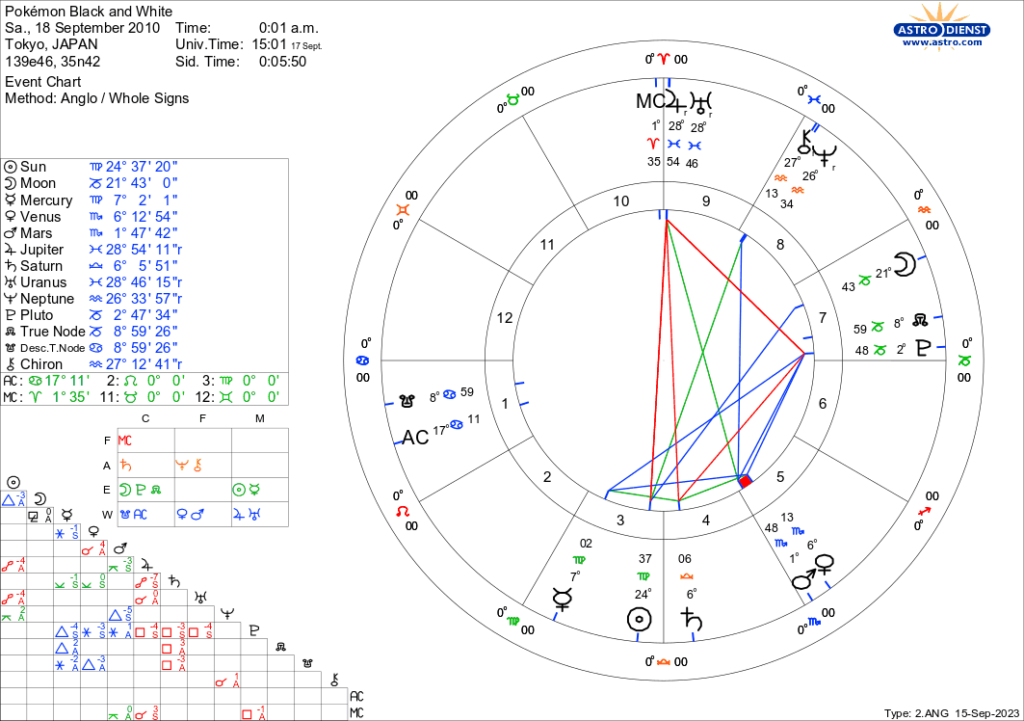
More than all that, the boldest choice Black and White made was a thoughtful, introspective, storyline that addressed moral questions about Pokémon’s core concept that have been raised since the beginning. Black and White were games in which Pokémon looked inward, reflected, and thought about itself as a franchise. Its villains, Team Plasma, are essentially fake PETA activists arguing for Pokémon liberation. This is the biggest critique Pokémon faces, especially in the west: “Isn’t it just glorified dogfighting for kids?” I’d argue no, it’s more like Persona for kids. Pokémon are better understood as summoned spirits instead of mundane animals. The whole concept of “they get stronger when you make friends with them” makes more sense that way.
But Black and White don’t attempt to seriously refute the PETA analogy this or any other way. They just put the argument into the mouths of hypocritical villains whose hypocrisy is immediately made obvious. But it is noteworthy that it mentions that critique in the first place. It’s like the writers tried to make a serious effort to engage with it and then just didn’t follow through. There are other hints and examples of this too. The titles themselves are an ironic nod toward moral complexity, considering how the legendary of Pokémon Black, Reshiram, is all-white, and Pokémon White’s Zekrom is all-black. An intentional nod to yin and yang – the inextricability of opposites, like truth and ideals. Essentially the titles are saying “It’s not as simple as black and white.”
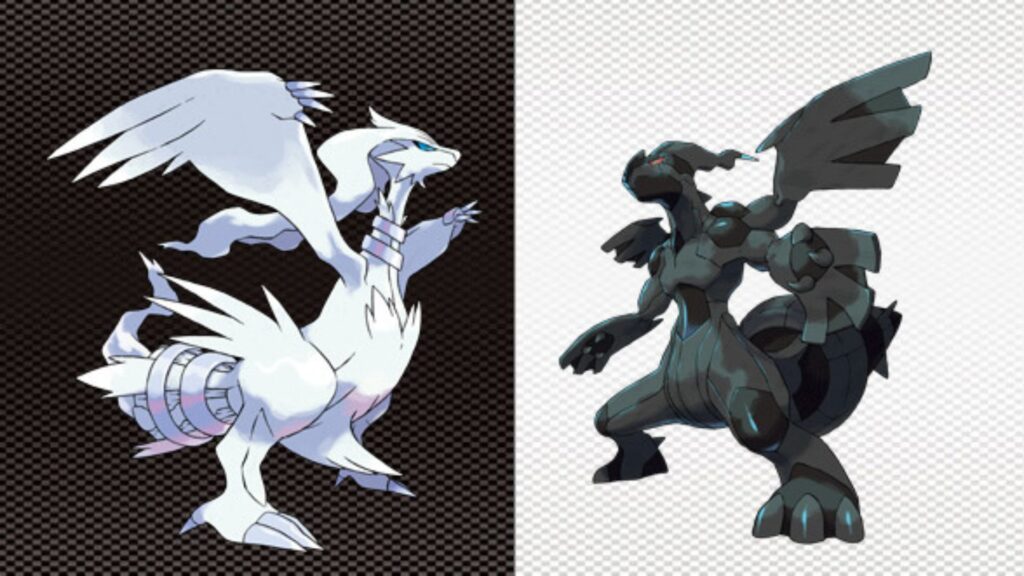
Any big video game production is a creative project shackled by budget, true. But the enormous cash cow that the IP represents means that Pokémon games can only ever be so ambitious or deviate from the formula so much; – the creative shackles are to scale with the size and importance of the brand. A lot of money goes into those games, and a lot of money is expected out of them.
There is the truth of how much you can realistically accomplish when making a creative project of this size and scale, and the ideal of how much you want to achieve. There is the reach towards a new and improved, more thoughtful and experimental Pokémon, but one’s grasp only goes so far.
—
Pokémon Scarlet and Violet, the most recent games in the series as of this writing, were released on November 18th, 2022, and were an incredibly buggy mess at launch. Big AAA titles being launched as embarrassing, buggy messes has become commonplace across multiple game studios – Cyberpunk 2077 comes to mind – but this is not the norm for Nintendo. Nintendo as a company is obsessed with quality, and buggy messes at launch are almost unheard of from them.
A significant part of the issue is scope creep. There are over a thousand Pokémon at this point. Every Pokémon included in a game needs to be individually animated. And S&V are Nintendo’s attempt to bring Pokémon games into the modern era of gaming, where everything is expected to be a huge open world with infinite exploration. That takes time to create, time and budget, and animation alone is a long, slow process. The scale of the endeavor has ballooned, and the truth of production is that there’s only so much time, in spite of whatever dreams you may have of what the end product you’re designing should look like.
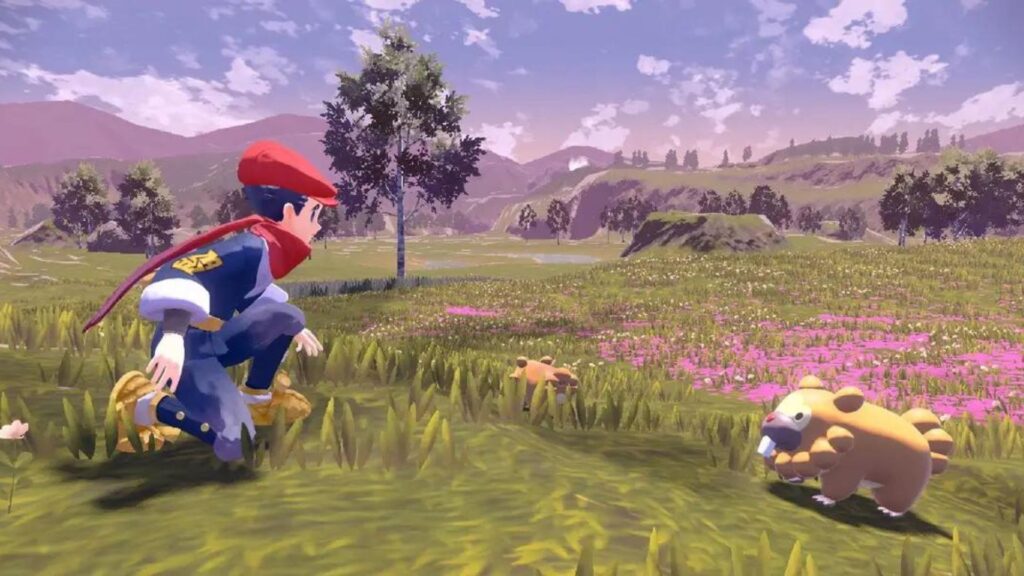
And it’s not that they haven’t done a full-3D open world game before, but it’s hard to argue that it was a main series game. Pokémon Legends: Arceus is somewhat closer to a side game than a main series one, a “what-if” that took some time to experiment seriously with the formula and see what works. It’s akin to Pokémon Colosseum in that way, a Nintendo GameCube game that played with more mature themes, aiming for a target audience of young teens instead of mainly children. They didn’t try that again, though. Its sequel had a younger protagonist and more kid-friendly themes.
It’s worth noting these games because the franchise has in fact experimented with its formula more than once, but it’s rare to see it done in one of the pairs of main series titles. The generation-introducers are usually kept very, very safe with regards to that. Part of the challenge is that Pokémon is at its core a game for little kids, but a huge chunk of its fan base is older, sometimes a lot older. Grownups with jobs and nostalgia who want the experience they recall from their youth and bring the expectations of a Seasoned Gamer™ to the table. But does every AAA title really have to be a true open-world game?
Sometimes the truth of your franchise is incompatible with the ideals of your fans. Sometimes other peoples’ expectations are bad for you to try to meet. Sometimes maturing means learning that if you try to be all things to all people – the indistinct ocean that is Pisces – you fail at being yourself.
—
There is a phenomenon called ludonarrative dissonance, which is when the game mechanics and the written story fail to line up. Black and White suffer from this in many ways, but perhaps the most ironic and undiscussed is how the power curve of available Pokémon accidentally encourages a playstyle which supports the antagonists’ arguments. If you try to take the Pokémon you catch in the early part of the game all the way to the Elite Four, you can do it, but it will be slow and frustrating and hard to keep up with the challenges. You can beat Lance with Pidgeotto on your team, but an Unfezant is going to seriously struggle against Alder. Most Pokémon games, you can raise the first Pokémon you catch into ones strong enough to beat the game. Black and White hand you a monkey to beat the first gym with which will spend the rest of the game in your PC as soon as you’re past it. In fact, most of the early-game Pokémon you can catch in Black and White will end up boxed no matter how much you love them if you don’t like losing battles all the time. Pokémon Black is the only Pokémon game I ever played where I boxed my starter mon because it wasn’t strong enough to keep up.
All of this means that for a lot of people playing the games, you end up treating Pokémon as tools to be used and discarded when no longer useful more in Black and White than in any other main series games. Maybe that was intentional, on some level. Maybe in some backhanded way, the game pushing the player to consider their treatment of their Pokémon by encouraging you to treat them disposable by throwing a bunch of trash mons at you throughout the early game was on purpose. “See? You’re acting just like the villains say you do. Doesn’t that make you feel some way?” Yes, frustrated and annoyed because I play Pokémon the same reason anyone does: Because I love these weird and adorable little creatures and I want to fantasize about being friends with pet kami, who wouldn’t? And I can’t do that because my adorable little Purrloin is useless in battle even as a Liepard unless I bore myself to tears grinding it to make it overleveled. I wish I could face the endgame with that sneaky little rascal, but fainting from two tackles is not my idea of a good time.
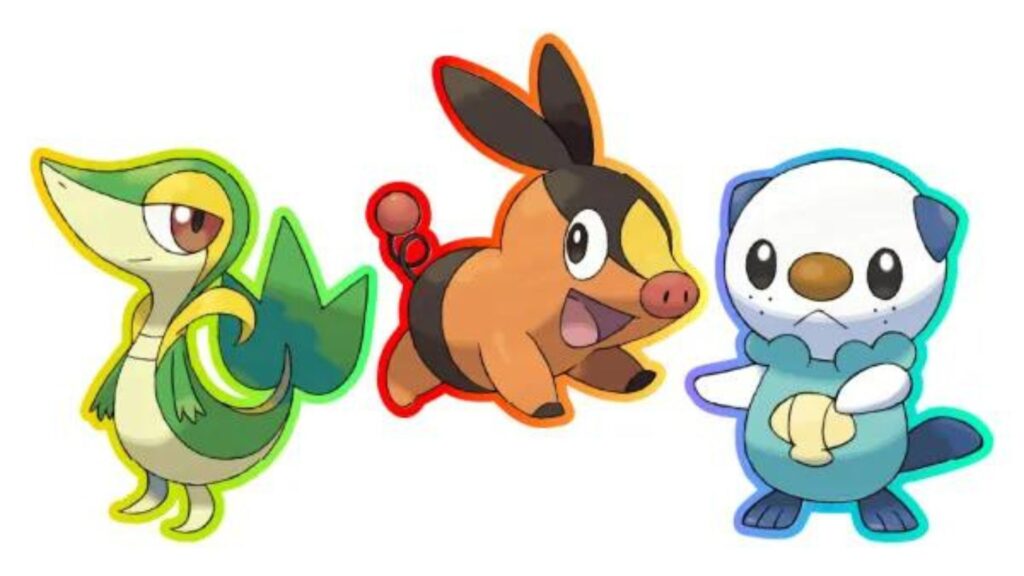
I can only imagine the meetings that made that happen. What thought process went into those decisions? How were they made? What balance choices came out of the design decision to have only new Pokémon up until the post-game?
Generation V was the last time Pokémon experimented so boldly with such big decisions in a main series game. It was creative with its formula in ways we haven’t truly seen since. As a franchise, it was feeling its age, and when you feel stuck in a rut trying something new and different without knowing how it will work out matters. You can’t escape stagnation without bold uncertain action, aka experimentation. But experiments are, well, experimental. Sometimes they succeed, sometimes they fail. But they are always – if you pay attention – worth learning from.
You can’t know the extent of your grasp unless you push your reach. If you don’t try something new, bold, and different with the formula, how can you learn just how much reality limits or doesn’t limit your ideals? I think it’s worth noting that Uranus is in aspect with Saturn for a chunk of his upcoming time in Pisces, and Uranus is the planet that rules bold experimentation like this.
Pokémon Black and White were released on September 18th, 2010. Jupiter and Uranus were together at the tail end of Pisces – Jupiter augmenting and pushing forth the bold, experimental quality of Uranus. And Saturn was in early Libra, meaning its development process over the previous few years happened during his time in Virgo. Virgo is the sign opposite to Pisces, meaning the themes of Pokémon‘s Saturn return were previewed and foreshadowed during that time. Whatever happens during your Saturn return echoes things that happened when Saturn was in the sign opposite it – roughly age 14-15 or so, the early stages of adolescence. The growing pains at this age are often the awkward, imperfect results of one’s awkward, imperfect efforts to mature. It’s one’s early attempts at growing up, failures and successes alike.
The themes echo more often than the literal events. During my Saturn opposition, I went from a middle school of about 100 students to a high school of over 1000. During my Saturn return, I went from being known in my small, local community of astrologers and readers to being known on a much bigger stage among many more people. The repetition of the theme of “how do I deal with heightened visibility” was apparent, even if it was a very different stage that suddenly got much larger.
With Saturn now in Pisces, the key phase of development for the remakes can be assumed to be underway. Partly because this is the pattern and formula they’ve established. Generation 8 had remakes of Pokémon Diamond and Pearl, Generation 9 therefore must have remakes of Black and White. Every 2-3 years, like clockwork, in mid-November. If the pattern continues as is, two years after Scarlet and Violent we will get the release of Pokémon Perfect Black and Ideal White or however they end up named, around the time Pokémon‘s Saturn return is exact – a point in the two-and-a-half-year phase where Saturn is closest to where it was in the birth chart, coinciding with a climax of the return’s themes.
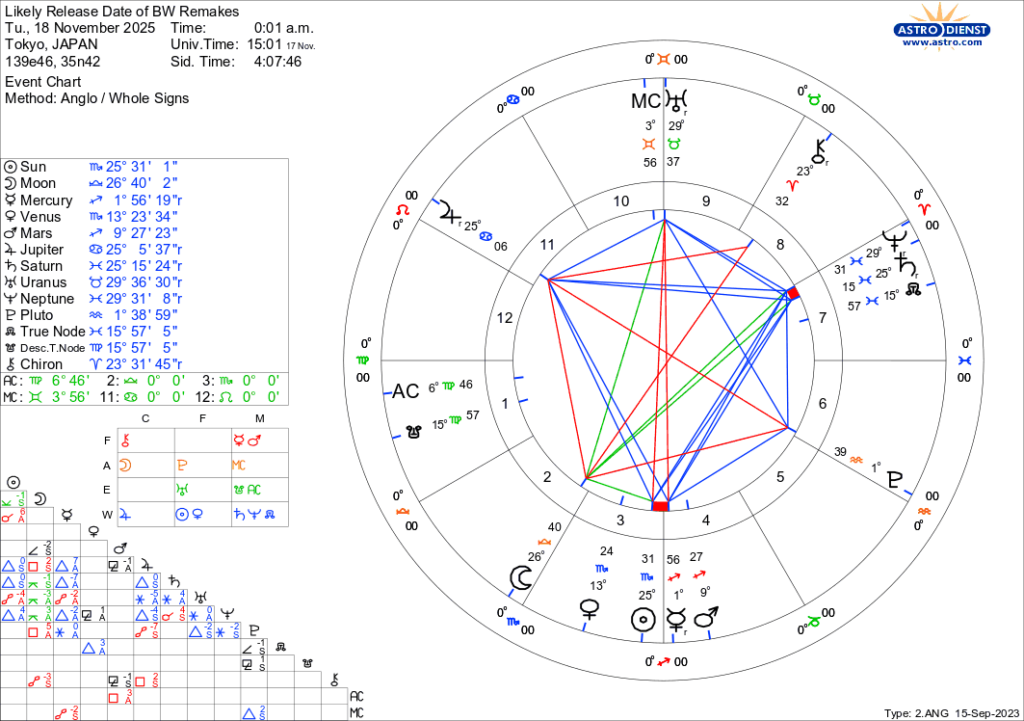
This look back at its past is needed. Making the time and effort to dive deep into one’s embarrassing teenage rebellion isn’t fun for anybody. But Pokémon, as a franchise, is Alder – it’s reached the top and has to keep going, but is struggling to remember why. Everything the series represents and tries to be is weighed down and limited by the cold hard facts of reality – production budgets, massive and ever-expanding scope, industry standards, a console with specs far below its competitors – and the expectations are high. Pokémon is in an identity crisis – it can’t be all things to all people, and has to choose who to be. The timing for an honest reckoning with its past – with what it took to make a game that literally had you interact with a dream world – is more perfect than ever. Because of course it is. Astrology is how we map the territory of time to navigate our way through it. Whether we are cognizant of astrology or not, we walk the territory of time regardless. And you can find your way or lose it, flow with the river or flounder your way upstream.
I hope Pokémon navigates these murky (Saturn) waters (Pisces) well. I hope they learn from their past, embrace what’s there to take with them into the future, and continue to make games beloved by all. I want to see my favorite franchise grow, to see it succeed, to keep playing Pokémon games into my old age. I hope the company takes away from this that it’s good to reach far enough to meet the end of your grasp, to make games that try something new, something different, something more grownup. This is the biggest mirror into the soul anyone could be confronted with. I hope they grow. I hope they learn.
May we all pass through the transit of Saturn in Pisces with a more nuanced, mature understanding of how to balance our truths with our ideals.

If you like what we do here at Uppercut, consider supporting us on Patreon. Supporters at the $5+ tiers get access to written content early.





